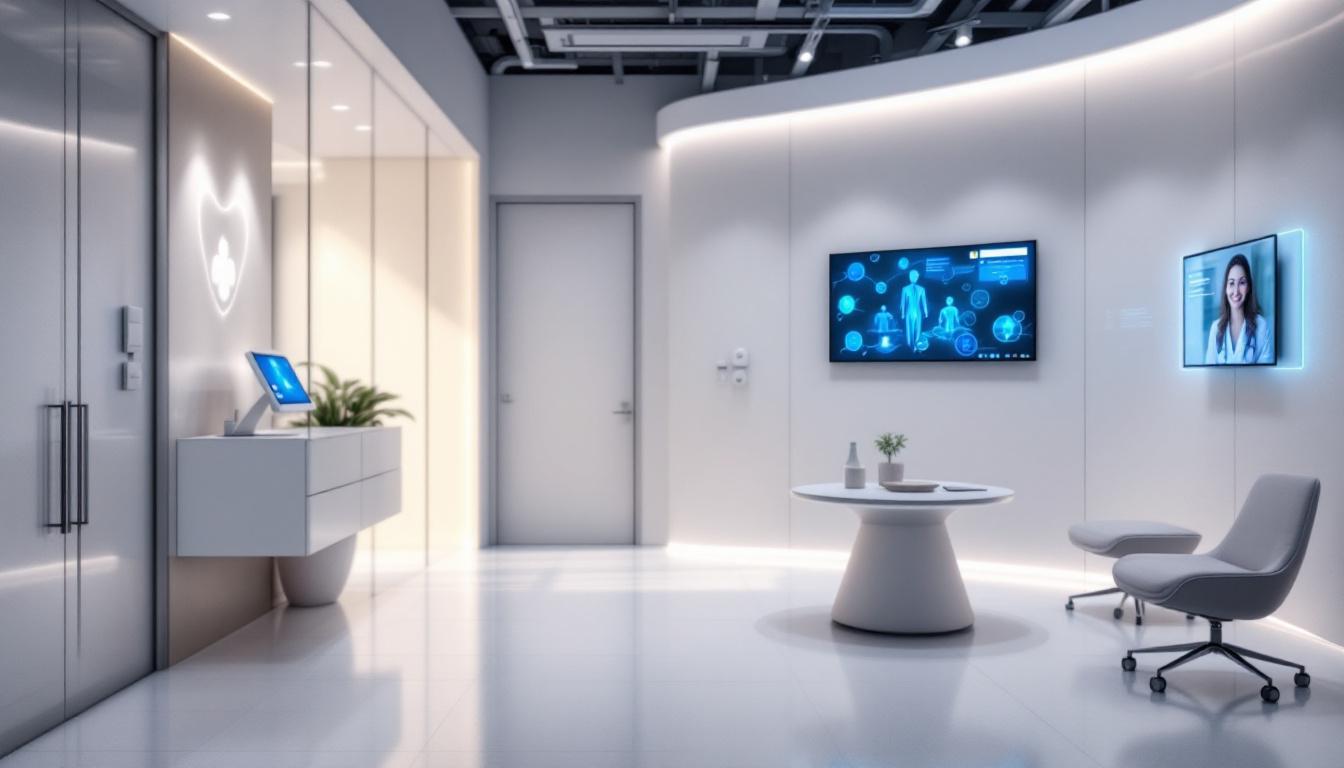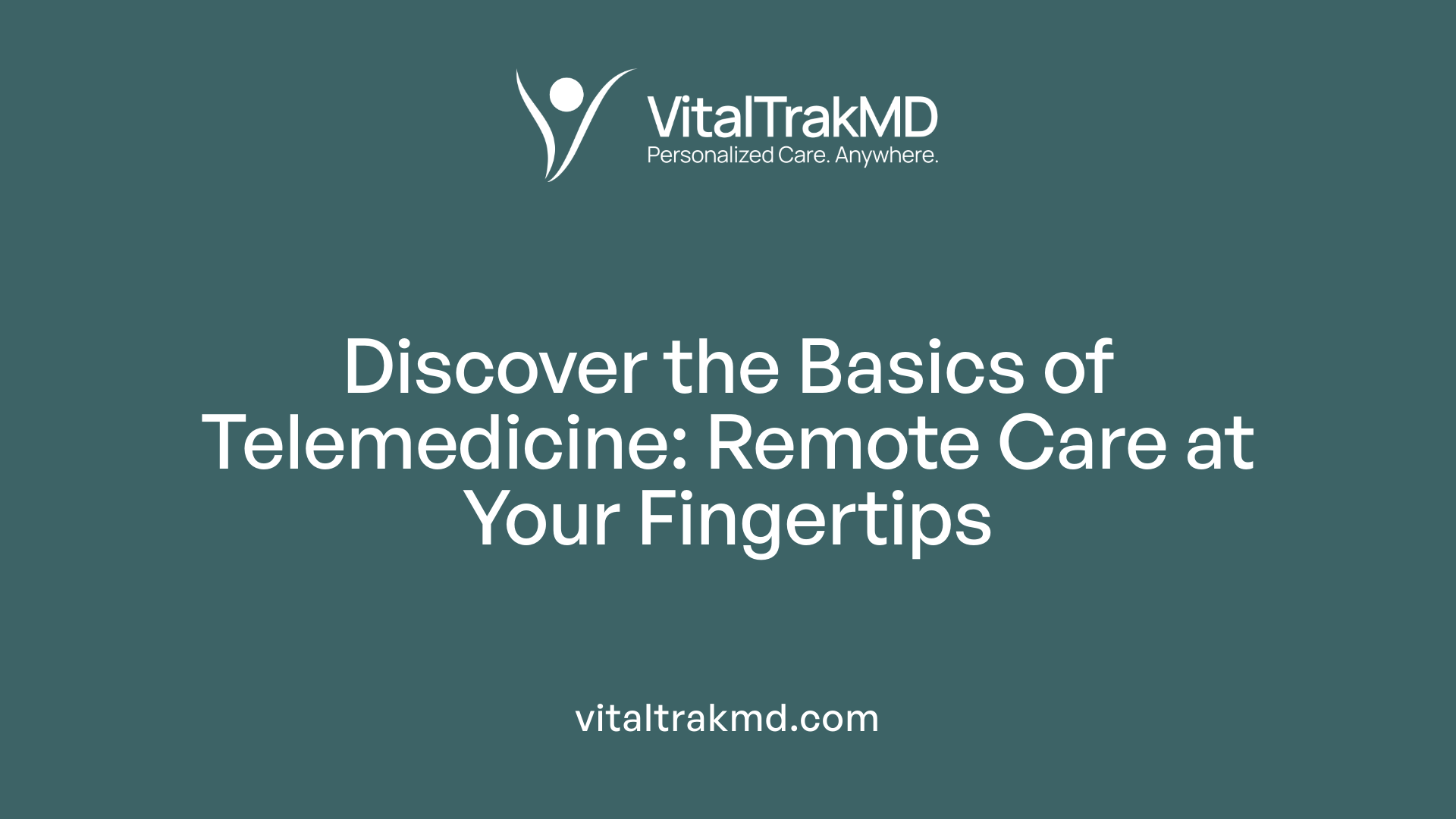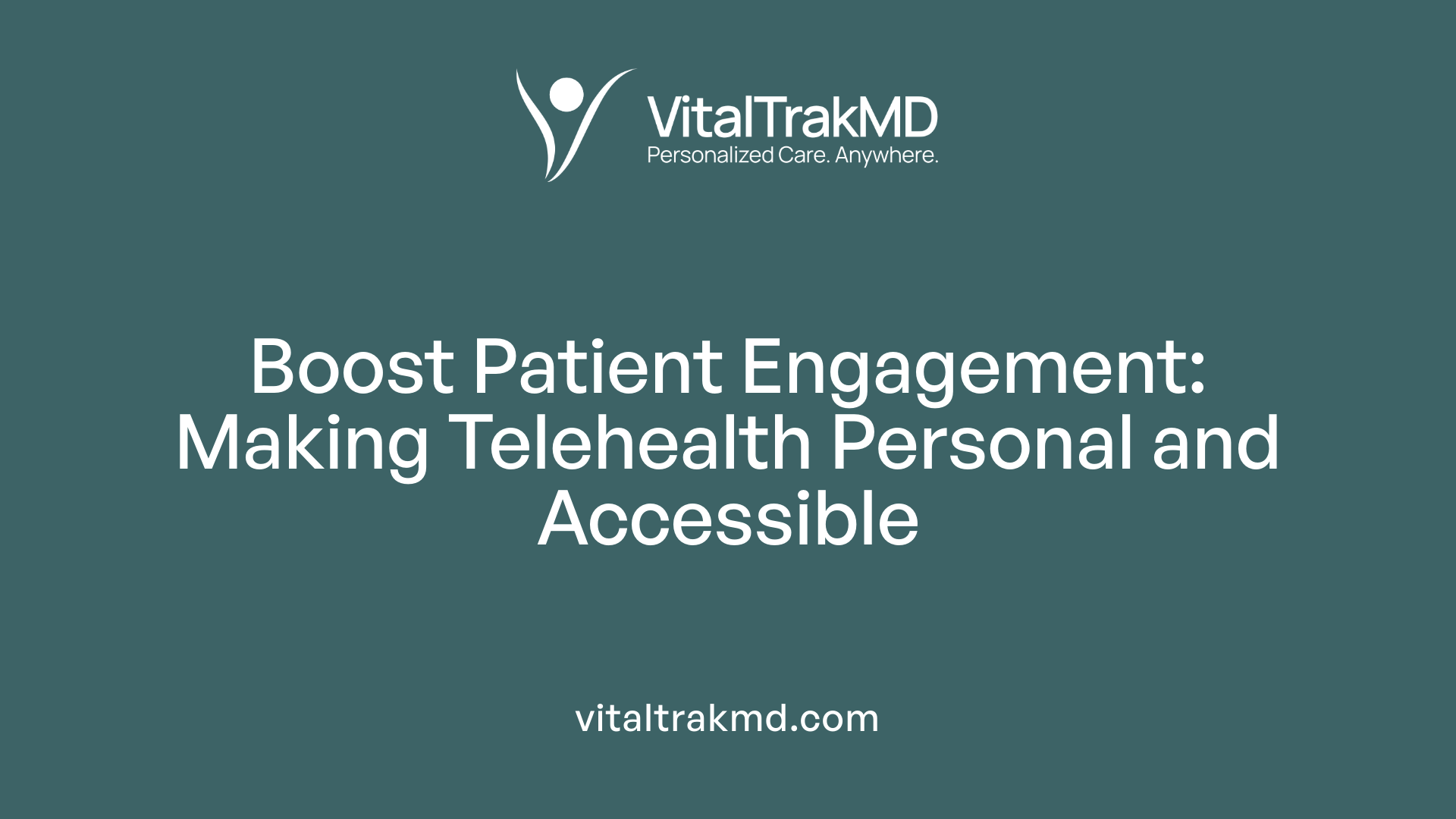How to Use VitalTrak Telemedicine Features Effectively

An Essential Guide to Maximizing Your Telemedicine Toolkit
Telemedicine has revolutionized healthcare delivery, offering unprecedented convenience and access. VitalTrak stands out as a comprehensive platform that integrates multiple features to support quality patient care. Understanding how to effectively utilize these telehealth features is vital for healthcare providers aiming to improve outcomes and streamline workflows. This guide explores essential functionalities, best practices, and future trends to help you harness the full potential of VitalTrak.
Understanding Telemedicine and Its Foundations

What is telemedicine?
Telemedicine involves using electronic communication tools to deliver healthcare services remotely. This means that patients and healthcare providers can connect through digital platforms, like video calls, phone consultations, or remote monitoring devices, regardless of their physical location.
This approach enables a wide range of medical services, including diagnoses, consultations, ongoing management of chronic conditions, and even some types of therapy or follow-up. Telemedicine is particularly useful for providing quick access to care, especially for people in rural or underserved areas, patients with mobility challenges, or situations where in-person visits are risky or inconvenient.
The scope of telemedicine extends beyond just doctor visits. It includes professional education, health research, public health initiatives, and emergency care support. Its goal is to make healthcare more accessible, efficient, and cost-effective, while maintaining high standards of safety and patient satisfaction.
Difference between telehealth, telemedicine, and remote patient monitoring
While these terms are related, they serve different purposes. Telehealth is the broadest term, encompassing all digital health activities including telemedicine, health education, and administrative functions.
Telemedicine specifically refers to clinical services delivered remotely, like medical consultations via video or phone. It often involves direct patient care at a distance.
Remote Patient Monitoring (RPM) is a subset of telehealth focused on using digital devices to monitor patients' health data continuously or periodically. Examples include blood pressure cuffs or blood sugar sensors that send data to healthcare providers for analysis and timely intervention.
Core features and applications of telehealth
Telehealth incorporates a variety of features to improve healthcare delivery. These include:
- Real-time video calls for consultations and follow-ups
- Symptom surveys and medical questionnaires
- Medication reminders and adherence support
- Educational modules to inform patients about health conditions
- Wound imaging for remote assessment
- Use of Bluetooth-enabled monitoring devices such as blood pressure monitors to transmit health data
- Electronic Medical Record (EMR) integrations for seamless data sharing
- Clinical dashboards that display patient data in accessible formats for providers
Hospitals and clinics utilize telehealth in diverse fields, including chronic disease management, oncology, post-surgical care, mental health services, prenatal and postpartum care, pediatrics, and hospice programs. These technologies help extend the reach of healthcare professionals, provide timely interventions, and improve overall patient outcomes.
Practical tips for virtual visits
Effective virtual healthcare depends on good communication, privacy, and preparation. Patients should find a quiet, well-lit space for appointments, use a device with reliable internet, and be familiar with the technology beforehand.
Providers may send informational forms to fill out before the visit and guide patients through technical procedures like signing in and enabling camera and microphone features. It’s often helpful for patients to have assistance from family members if needed.
By understanding these basic elements of telemedicine and telehealth, patients and providers can tap into the full potential of remote healthcare services to enhance health management and access.
Core Features of the VitalTrak Telehealth Platform

What are the key features of a telehealth platform?
A comprehensive telehealth platform like VitalTrak offers several essential features to support remote healthcare. Central to its functions are real-time video visits, which enable direct communication between patients and providers via secure, HIPAA-compliant video calls.
Another vital component is the integration with electronic health records (EHR), allowing for seamless access to patient data such as medical history, medication lists, and recent lab results. This integration helps providers make informed decisions quickly and reduces the risk of errors.
Connected devices play a crucial role in remote monitoring. VitalTrak supports Bluetooth-enabled devices like blood pressure cuffs, pulse oximeters, and glucose monitors, which wirelessly transmit vital signs directly to the platform. This continuous data flow aids in managing chronic conditions such as hypertension or diabetes.
Beyond monitoring, the platform includes appointment management tools—patients can schedule, reschedule, or cancel appointments online, reducing waiting times and administrative workload.
Educational modules and patient support features are also incorporated. These tools help improve health literacy by providing videos, articles, and interactive health education tailored to individual needs.
Multi-party video calling capabilities facilitate group consultations, including family members or multiple healthcare professionals, promoting collaborative care.
The platform ensures security through end-to-end encryption and compliance with data protection regulations, crucial for maintaining patient confidentiality.
Additional functionalities include secure messaging for asynchronous communication, medication reminders to boost adherence, and clinical dashboards that aggregate patient data into user-friendly displays for monitoring treatment progress.
In sum, VitalTrak integrates these features into a user-friendly interface designed to increase access, improve healthcare outcomes, and streamline workflows for both clinicians and patients.
Best Practices for Virtual Visits

How should I prepare my environment for a virtual visit?
Creating a comfortable, private, and quiet space is fundamental for a successful telehealth appointment. Find a well-lit area with minimal background noise where you won't be interrupted. This helps ensure privacy, so sensitive health information remains confidential. Before the visit, check your internet connection, and ensure your device—be it a smartphone, tablet, or computer—is charged and functioning properly.
Preparation may also include gathering any necessary documents or medical history information you might need during the consultation. Some healthcare providers may send pre-visit forms or instructions, so reviewing these beforehand can make the experience smoother.
Why are effective communication and cultural sensitivity important?
Clear, straightforward communication helps maximize understanding and ensure your concerns are addressed effectively. Use simple language, and don't hesitate to ask questions if anything is unclear. Active listening and maintaining eye contact by looking into the camera foster engagement and trust.
Cultural sensitivity enhances the quality of care, respecting diverse backgrounds and health beliefs. Providers trained in cultural competence create a welcoming environment, ensuring all patients feel heard and understood. Using language that is respectful and inclusive helps build rapport and encourages honest dialogue.
What are some best practices for conducting effective telemedicine visits?
To ensure a productive virtual consultation, both providers and patients should be well-prepared. Healthcare professionals should verify that their technology—including reliable internet, high-quality audio and video equipment—is set up correctly. They should also confirm the patient’s readiness through pre-visit communications, including technical checks.
During the visit, clinicians should actively listen, employ teach-back techniques to confirm understanding, and utilize supportive body language like nodding. Good telehealth etiquette, such as minimizing disruptions and maintaining professionalism, improves the experience.
Patients should provide complete and accurate health information, participate actively, and communicate any issues promptly. Both parties should be prepared to troubleshoot minor technical problems or, if necessary, schedule an in-person follow-up.
Adhering to legal and organizational guidelines is essential. This includes respecting patient privacy, following HIPAA regulations, documenting the encounter thoroughly, and managing cross-state licensing when applicable.
In summary, establishing a professional, private environment and fostering clear and respectful communication form the foundation for effective virtual visits. These practices ensure that telehealth services are safe, trustworthy, and patient-centered.
Enhancing Patient Engagement and Satisfaction

What are the benefits of telemedicine for patients?
Telemedicine offers numerous benefits for patients, including increased convenience and faster access to healthcare services by allowing consultations from home through video or phone calls. It helps reduce travel time, waiting in clinics, and scheduling difficulties, making healthcare more accessible and efficient.
It also enhances the ability to manage chronic conditions and conduct assessments remotely, which can lead to better diagnoses and treatment plans. During infectious outbreaks like COVID-19, telehealth minimizes in-person visits, supporting infection control.
Overall, telemedicine improves patient satisfaction by making healthcare more flexible and accessible. It can lower healthcare costs and broaden access, especially for rural or underserved communities where traditional healthcare options are limited.
Use of patient portals and education features
Patient portals serve as personal health dashboards, giving patients direct access to medical records, test results, upcoming appointments, and care summaries. This transparency helps patients stay informed and involved in their health management.
Many portals include educational modules—videos, articles, and interactive tools—that enhance patient knowledge about their conditions, medications, and lifestyle choices. Better education promotes adherence to treatment plans and encourages healthier behaviors.
Patients can message their providers through secure channels, ask questions, and receive support between visits. Such features foster continuous engagement and build trust.
Effective communication strategies
Successful telehealth interactions depend heavily on clear, empathetic communication. Providers should speak in plain language, employ active listening, and use visual cues like eye contact by looking into the camera.
Teach-back methods—asking patients to repeat information—ensure understanding. Maintaining a warm, professional demeanor creates a supportive virtual environment.
Good lighting, appropriate body language, and cultural sensitivity further improve virtual interactions. Providers should also verify patient identity and explain how each telehealth feature works to minimize confusion.
Building rapport virtually involves demonstrating empathy, maintaining professionalism, and creating a private, distraction-free space.
Practical tools enhancing engagement
Digital health tools such as medication reminders, symptom surveys, and wearable integrations help patients stay proactive. These technologies can notify patients about upcoming appointments, medication schedules, or alert providers to concerning health changes.
Comprehensive health apps and records organize health information, facilitate tracking vital signs, and provide tailored health tips, thereby empowering patients.
By combining user-friendly platforms with personalized education and effective communication, telehealth services can significantly boost patient satisfaction and contribute to better health outcomes.
| Tool/Feature | Purpose | Benefits |
|---|---|---|
| Patient portals | Access medical records, test results, appointment scheduling | Promotes transparency, improves adherence |
| Education modules | Videos, articles, interactive content | Enhances knowledge, encourages healthy behaviors |
| Secure messaging | Direct communication with providers | Supports ongoing engagement |
| Wearable device integration | Monitoring vital signs remotely | Facilitates proactive care |
| Medication reminders | Alerts for medication schedules | Improves adherence |
Search query for further information
"Patient engagement strategies in telehealth"
Remote Monitoring Technologies and Their Role
How can technology and telehealth tools aid in monitoring vital signs?
Advances in telehealth and digital technology have revolutionized how vital signs are monitored and managed outside traditional healthcare settings. Wireless sensors, mobile apps, and connected medical devices enable continuous collection and transmission of crucial health data.
Wearable devices such as smartwatches, fitness trackers, and specialized sensors can automatically record parameters like heart rate, blood pressure, blood sugar levels, oxygen saturation, and body temperature. These devices transmit data securely in real time to healthcare providers through cloud-based platforms or dedicated telehealth systems.
This real-time data sharing allows for proactive health management, early detection of potential issues, and timely medical intervention. For example, patients with chronic conditions like hypertension or diabetes can be monitored remotely, reducing the need for frequent office visits.
Telehealth platforms further facilitate virtual consultations where providers can review vital sign data, conduct remote assessments, and adjust treatment plans accordingly. This integration of data collection and teleconsultation enhances patient engagement, improves treatment adherence, and helps address healthcare disparities, especially in rural or underserved areas.
Overall, these technologies make healthcare more accessible, efficient, and personalized. They support early diagnosis, optimize disease management, and reduce costs by preventing complications and unnecessary hospital visits.
By leveraging wireless sensors, mobile applications, and secure data transmission, telehealth systems enable continuous health monitoring, empowering patients and clinicians alike to manage health proactively and effectively.
Implementing Telemedicine Effectively in Healthcare Settings
How can telemedicine be used effectively in healthcare settings?
Telemedicine enhances healthcare delivery by enabling virtual consultations, remote patient monitoring, and follow-up care. These services greatly improve access, especially for those in rural or underserved regions who might otherwise face barriers to in-person visits. Through high-quality video calls, mobile apps, and Internet of Things (IoT) devices like Bluetooth monitors, healthcare providers can diagnose, treat, and monitor patients efficiently.
During health crises like the COVID-19 pandemic, telemedicine became vital in reducing exposure risk while maintaining continuity of care. It is particularly effective for managing chronic diseases, mental health services, and post-surgical follow-up, providing patients the convenience of accessing care from the comfort of their homes.
To optimize virtual care, healthcare providers often utilize features such as electronic medical record (EMR) integrations, symptom surveys, medication reminders, patient portals, and educational modules. These tools support patient engagement, adherence, and satisfaction. Moreover, multi-party video calls facilitate collaborative decision-making involving families and care teams.
However, to ensure telemedicine’s full potential, continuous evaluation of its use, technological enhancements, and supportive policies are necessary. Addressing barriers like internet access, digital literacy, and data security fosters equitable and efficient healthcare delivery, ensuring telehealth benefits reach all populations.
Integration with existing systems and workflow improvements
Successful telemedicine implementation requires seamless integration with existing electronic health records (EHRs) and hospital systems. This interoperability allows healthcare providers to access comprehensive patient data during virtual visits, reducing errors and streamlining workflows.
Optimizing workflows involves establishing clear protocols for virtual visits, including patient pre-visit instructions, appointment scheduling, and follow-up procedures. Automated systems for billing, insurance verification, and documentation further reduce administrative burdens.
One example is the VA’s Vitals system, which uses contactless remote photoplethysmography via smartphones to automatically gather vital signs during video visits. Such innovations save time, improve measurement accuracy, and support remote assessments.
To facilitate adoption, platforms should be user-friendly, accessible across all devices, and include features like multi-modal communication (video, audio, text). Provider training, technical support, and patient education also play pivotal roles in successful deployment.
Ultimately, integrating telemedicine into existing clinical workflows and systems enhances care delivery by making it more accessible, efficient, and patient-centered. Continuous improvements and investments in technology and infrastructure are essential to harness telehealth’s full benefits.
Future Trends in Telehealth: Interoperability and AI

What are future trends in telehealth?
The landscape of telehealth is rapidly evolving, with several innovative directions shaping its future. One major trend is the advancement of interoperability, which allows different health information systems, devices, and apps to communicate seamlessly. This connectivity ensures that patient data—such as electronic health records (EHRs), remote monitoring results, and wearable device information—can be shared easily among healthcare providers across various settings. As a result, clinicians gain a comprehensive view of a patient’s health, leading to more coordinated and effective care.
Alongside interoperability, artificial intelligence (AI) integration is transforming telehealth by making diagnostics, decision support, and patient management smarter and more precise. AI-powered tools can analyze vast amounts of health data to identify patterns, predict health risks, and recommend personalized treatment options. For example, AI algorithms can help triage patients remotely, assess symptoms through digital questionnaires, and assist in treatment planning.
Predictive analytics is another key development, enabling providers to forecast patients’ health trajectories based on historical and real-time data. This proactive approach enables earlier interventions, reduces hospitalizations, and enhances patient outcomes.
The expansion of remote patient monitoring (RPM), wearable health technologies, and smart sensors will further amplify telehealth services. These devices can continuously track vital signs such as blood pressure, blood sugar, and heart rate, transmitting data instantly to care teams. Innovations like contactless vital sign assessment tools—such as VA’s Vitals software—demonstrate how rapid, accurate health metrics can be delivered during virtual visits.
However, with these advancements come challenges. Ensuring data security, maintaining compliance with regulations, and addressing disparities in access are vital considerations. As telehealth technology becomes more sophisticated, efforts to make it equitable and accessible will remain crucial.
In summary, the future of telehealth is geared toward a more connected, intelligent, and personalized healthcare system, driven by technological innovations that improve efficiency, accuracy, and patient engagement.
Ensuring Data Security and Regulatory Compliance
What are the basic requirements for telemedicine?
Successfully implementing telemedicine involves meeting several essential standards related to security, legal compliance, and operational procedures. First, healthcare providers must ensure that all virtual services comply with HIPAA, the U.S. law set to protect sensitive patient health information. This entails using end-to-end encryption during all video calls and data exchanges, securing electronic health records (EHR), and maintaining secure data storage.
Secondly, licensing plays a vital role. Providers must be appropriately licensed for the regions they serve, which may require obtaining multiple state licenses or participating in licensure compacts like the Interstate Medical Licensure Compact. This ensures legal authorization to offer care across different jurisdictions.
Billing and reimbursement also require attention. Healthcare providers need to adhere to billing guidelines established by Medicare, Medicaid, and private insurers. Many payers now recognize telehealth visits and may offer parity laws that equate reimbursement rates with those of in-person services.
Consistency in the standard of care is crucial. Telemedicine must provide a quality of services comparable to traditional face-to-face visits. This includes proper documentation, obtaining patient consent, verifying identities, and ensuring clear communication.
Finally, adopting secure platforms that support these standards is critical. This includes signing Business Associate Agreements (BAAs) with vendors, conducting security risk assessments regularly, and training staff on data privacy practices. These measures ensure telehealth services are both effective and compliant with legal frameworks, safeguarding patient trust and safeguarding against legal repercussions.
Building a Strong Virtual Bedside Manner and Patient Trust
How can remote problem-solving and assessments be performed effectively?
Remote problem-solving relies on collecting thorough patient history and utilizing remote monitoring devices such as blood pressure cuffs, glucose monitors, and other digital tools. These devices transmit vital signs and health data automatically to healthcare providers, enabling real-time assessment.
In addition, clinical decision support systems and collaborative approaches among care teams enhance diagnostic accuracy and treatment plans. Evidence shows that integrating these technologies can lead to improved diagnosis, quicker interventions, and a reduction in unnecessary prescriptions.
Effective remote assessments also involve patient preparation, guided self-examinations, and meticulous documentation. These strategies ensure that virtual visits meet the same standard of care as in-person consultations, fostering better patient outcomes.
How to develop a strong virtual bedside manner?
Creating a trusting and empathetic environment during virtual visits requires specific communication techniques. Maintaining eye contact by looking directly into the camera helps establish a sense of connection.
Employing verbal cues, active listening, and note-taking demonstrates attentiveness and care, making patients feel heard and valued. Good lighting, minimizing distractions, and ensuring a professional background are essential to foster trust.
Showing empathy, maintaining professionalism, and tailoring communication to the patient’s cultural and individual needs are vital. These practices help build rapport, support patient satisfaction, and reinforce confidence in the virtual care experience.
In summary, combining effective communication skills with technological awareness can significantly enhance the virtual bedside manner. This approach ensures patients feel supported and understood, ultimately improving health outcomes in telehealth settings.
Overcoming Barriers and Addressing Disparities in Telehealth Access
What barriers exist to effective telehealth implementation?
Effective telehealth programs face several obstacles that can limit their reach and usefulness. Major barriers include gaps in technological infrastructure, such as unreliable or unavailable internet access and lack of compatible devices. Digital literacy challenges also play a significant role, especially among older adults or populations with limited experience using technology. Furthermore, disparities in access persist across socio-economic, geographic, and demographic lines, making it difficult for some groups to benefit fully from telehealth services.
Reimbursement and payment issues further complicate implementation, as inconsistent policies can hinder healthcare providers from offering or expanding telehealth services. During the COVID-19 pandemic, the rapid scaling of telehealth revealed the critical need for better preparedness, ongoing support, and strategies to ensure equitable access to all populations. Addressing these barriers requires a comprehensive approach—improving infrastructure, training users, and advocating for supportive policies.
How can disparities in telehealth access be addressed?
Reducing disparities in telehealth involves multifaceted strategies aimed at making technology more accessible and easier to use for everyone. Initiatives include improving digital literacy through community education and training programs tailored to underserved populations. Expanding internet infrastructure, especially in rural and low-income areas, is crucial for bridging the digital divide.
Affordable device programs that provide smartphones, tablets, or computers to low-income families can significantly increase access. Public health campaigns and targeted outreach help raise awareness and ensure that individuals understand how to utilize telehealth services effectively.
Policy and government support play a vital role in facilitating these efforts. Initiatives such as subsidies, grants, and regulations that promote equitable access are key to closing the digital gap. Ultimately, a coordinated effort—combining infrastructure investment, education, and policy reforms—is essential to ensure all populations can benefit from telehealth and improve health outcomes.
Case Study: The VA’s Vitals Technology and Its Impact
What is the VA’s Vitals feature and how does it work?
The VA’s Vitals feature is an innovative tool designed to enhance telehealth by providing quick, contactless vital sign measurements during virtual appointments. It leverages contactless, video-based remote photoplethysmography (rPPG) technology, which uses infrared cameras on smartphones to scan a patient’s face.
During a virtual visit, the system automatically captures facial data, analyzing subtle changes in skin color caused by blood flow to determine vital signs. It measures parameters such as blood pressure, respiratory and heart rates, pulse, and body temperature. This process takes approximately 45 seconds and provides real-time results directly on the screen.
Developed by the healthcare technology company Binah.ai, the Vitals software is integrated into the VA Video Connect telehealth platform. As of now, it is awaiting FDA approval.
The technology has been well-received, with both providers and patients rating it highly for usability and trustworthiness. Users reported usability scores of 86 out of 100 for providers and 82 out of 100 for patients. Additionally, confidence and trust in the readings were rated at 90 and 85 out of 100, respectively.
This tool offers a practical, time-saving, and accurate way to collect vital signs remotely, potentially reducing errors associated with manual reports and bulky home devices. Its simplicity and reliability make it suitable for various clinical settings, especially specialty care, ultimately improving remote patient management.
Advantages of Vitals in Telehealth
The technology not only streamlines the data collection process but also enhances the overall quality of virtual care by enabling rapid and accurate health assessments. With proper training and support materials, Vitals has the potential to be widely adopted, improving both efficiency and patient confidence in telemedicine.
Future Potential
As it gains FDA approval, the VA’s Vitals system may pave the way for further innovations in contactless health monitoring, strengthening the role of AI and remote assessment tools in modern healthcare.
Supporting Education, Training, and Future Adoption of VitalTrak Tools
What are the benefits of integrating the VA Vitals feature?
The VA Vitals feature brings several advantages that can significantly enhance telehealth services. These benefits include saving time during patient assessments, improving the accuracy of vital sign measurements, reducing reporting errors, and the potential to replace certain home biometric devices. Such improvements streamline clinical workflows and increase the reliability of remote health data.
To maximize these advantages, comprehensive training materials, user support, and educational resources are essential. These tools help healthcare providers and patients become familiar with the technology, building confidence in its accuracy and usability.
Educational resources may include detailed user manuals, quick-start guides, instructional videos, and prompts integrated into the software. Support services, such as help desks and technician assistance, facilitate smooth onboarding and troubleshoot issues.
With proper training and ongoing support, the adoption rate of VitalTrak and similar tools can be significantly improved. This ensures effective implementation, fosters trust among users, and promotes long-term integration into telehealth practices.
Overall, investing in educational and support infrastructure is crucial for realizing the full potential of remote vital tracking technologies, enhancing patient care, and paving the way for wider future acceptance of telehealth innovations.
Conclusion: Optimizing Telemedicine with VitalTrak
To truly harness the potential of telehealth, healthcare providers should focus on implementing strategic approaches that enhance patient care and system efficiency. Integrating platforms like VitalTrak into existing healthcare infrastructure, such as Electronic Health Records (EHRs), allows seamless access to comprehensive patient data, streamlining clinical workflows.
A critical component of telemedicine success is ensuring high-quality virtual interactions. This involves adhering to best practices in communication—maintaining eye contact, using clear language, and practicing active listening. Creating a professional and empathetic virtual environment helps build trust and rapport with patients.
Support and education are vital. Providers should guide patients through technology setup and usage, minimizing technical barriers. Offering educational resources and prompts can further improve adoption and effective use of tools like VitalTrak.
Future advancements in telehealth, including interoperability, artificial intelligence, and predictive analytics, promise more personalized and proactive care. Staying informed about these developments, along with maintaining compliance with privacy and security regulations, enhances the safety and efficiency of telemedicine services.
Summarizing key strategies, maximizing benefits involves comprehensive understanding of platform features, integration with health systems, effective virtual communication, patient support, and ongoing adaptation to technological innovations.
How can healthcare providers maximize the benefits of VitalTrak? Healthcare providers can maximize the benefits of VitalTrak by ensuring they understand all features, adhere to best practices in virtual communication, integrate the platform with existing systems like EHRs, and support patients with proper education and tech setup. Staying informed on future developments and compliance requirements further enhances telehealth effectiveness.
Embracing Innovation for Better Outcomes
The future of telemedicine is promising, with platforms like VitalTrak leading the way toward more integrated, intelligent, and patient-centered healthcare. By mastering platform features, adhering to best practices, and addressing barriers, healthcare professionals can deliver safer, more effective, and accessible care. Ongoing training, technological advancements, and policy support will continue to shape the landscape, making telehealth an indispensable element of modern medical practice.
References
- The Ultimate Guide to Telehealth Technology
- Telehealth: Technology meets health care - Mayo Clinic
- Top 15+ Must-Have Features in a Telemedicine App - Empeek
- Top 7 Telemedicine Skills for Healthcare Professionals
- The Starter Guide to Telehealth Technology - HIMSS
- Remote Monitoring Telemedicine - Healthcare Delivery Option
- Remote Patient Monitoring | PSNet - AHRQ
- Introduction to telehealth and remote patient monitoring
Recent articles
Want to Feel Better and Live Healthier?
Join hundreds of patients taking control of their health with personalized care that fits their life – not the other way around.
Rated 4.8/5 by 32+ customers







